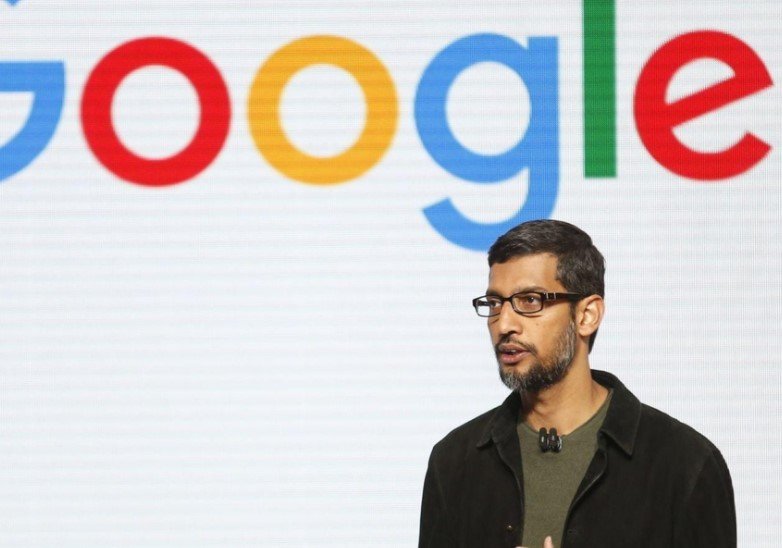Executives push for sharper productivity and smarter use of AI as spending surges and rivals close in
At an all-hands meeting last week, Google’s top brass delivered a clear message: get sharper, move faster, and start using AI more like your job depends on it—because, frankly, it might.
CEO Sundar Pichai and developer chief Brian Saluzzo called on employees to stop treating artificial intelligence like a future concept. The future is here, they implied, and it’s about getting more done with fewer hands on deck.
Pichai says headcount isn’t the answer anymore
In a rare blunt moment, Pichai acknowledged what many at Google already suspected—productivity expectations are rising, but hiring isn’t. The company isn’t looking to throw people at problems anymore. It wants people to throw AI at them.
“Anytime you go through a period of extraordinary investment, you respond by adding a lot of headcount, right?” Pichai said during the meeting, according to internal audio shared with CNBC. “But in this AI moment, I think we have to accomplish more by taking advantage of this transition.”
That “transition” is Google’s massive $85 billion bet on AI infrastructure in 2025. Just a few months ago, the company had planned to spend $75 billion. But the generative AI arms race has cranked up the stakes—and the burn rate.

Even for Google, $85 billion is no pocket change. It’s more than the GDP of many countries. And with Microsoft, Amazon, and Meta pouring billions into their own models and data centers, nobody can afford to fall behind. Especially not Google, whose entire ad business—and future search experience—is under threat from AI disruption.
Less headcount, more horsepower
At the core of Google’s AI strategy is a fundamental shift: more tools, fewer meetings. Fewer layers, more automation. And absolutely no dead weight.
Brian Saluzzo, who leads development for the Core team—the engine behind products like Search and Gmail—said Google is building fresh tools to help software engineers move faster. This isn’t just about coding faster. It’s about thinking differently.
The message wasn’t subtle. Employees who don’t pick up AI skills may find themselves sidelined.
Here’s the breakdown of what that means in practice:
-
AI-powered code generation is being embedded across development pipelines.
-
Engineers are expected to use Gemini and internal LLM tools for testing and debugging.
-
Non-technical roles are being asked to streamline workflows using internal automation models.
-
Internal chatbots and data summarizers are being pushed to reduce routine documentation work.
That’s a far cry from the vibe of previous years, where Google’s famously open culture allowed ideas to meander and incubate for months, even years. These days, it’s more, “You got an idea? Cool. Ship it.”
Capital costs skyrocket as the AI race goes nuclear
If you’re wondering why the pressure’s rising, just take a look at the bill Google’s footing this year. That $85 billion capex plan? It’s not just for show.
Google is on a building spree, pouring money into massive AI-ready data centers, fiber optic networks, and custom TPU chips.
Here’s a quick look at how that investment stacks up against peers:
| Company | 2025 Capex Forecast | Focus Areas |
|---|---|---|
| Google (Alphabet) | $85 billion | Data centers, AI chips (TPUs), fiber |
| Microsoft | $80 billion+ | Azure AI, OpenAI partnership, servers |
| Amazon (AWS) | $70 billion+ | AI services, infrastructure upgrades |
| Meta | $40–45 billion | AI, Reality Labs, compute power |
So yeah, Google’s not just spending more—it’s spending faster.
And the internal pressure is real. This isn’t about nice-to-haves anymore. It’s about catching up—or staying ahead—of giants who are now just as good at AI as Google, if not better.
Layoffs still haunt the hallways
You can feel the tension in the hallways of Mountain View.
Since 2023, Google has cut thousands of jobs—many of them quietly. While some layoffs were loud, others came through reorgs, team consolidations, and performance-based trims.
Even now, whispers of “quiet layoffs” ripple through Slack chats. Teams are being asked to “justify” roles. Some employees, sources say, are left wondering if their job exists more on paper than in practice.
One engineer told us, “You either adapt to the new AI-first way or you’re invisible.” It’s a chilling statement for a company that once prided itself on nurturing moonshots and experimentation.
At Google today, moonshots are fine—as long as they come with metrics.
Gemini’s shadow looms large
The other thing employees are grappling with is the rise of Gemini, Google’s flagship AI model.
On one hand, it’s a powerful new tool. On the other, it’s viewed by some as a replacement—not a helper. Project managers, data analysts, even junior marketers are being encouraged to let Gemini take over “repetitive tasks.”
But what qualifies as repetitive? That’s the gray area.
“It starts with summaries and notes,” said one staffer. “Then one day, your entire role is a prompt.”
Gemini is deeply embedded across Workspace, Android, and ChromeOS. That means it’s not just a tool for developers. It’s creeping into every function—HR, finance, legal, you name it.
Can Google keep its soul while chasing speed?
For longtime Googlers, the shift feels… jarring.
This is a company that once let engineers spend 20% of their time on passion projects. A place where failure was embraced and launch deadlines were more suggestion than rule.
There’s still a lot of pride in Google’s mission. And there’s a real belief internally that Gemini, Search Generative Experience (SGE), and DeepMind advances can win the long game.
But the short game? That’s all about efficiency.
“We’re being asked to do more, faster, with fewer people,” one employee said. “And to smile while we do it.”








